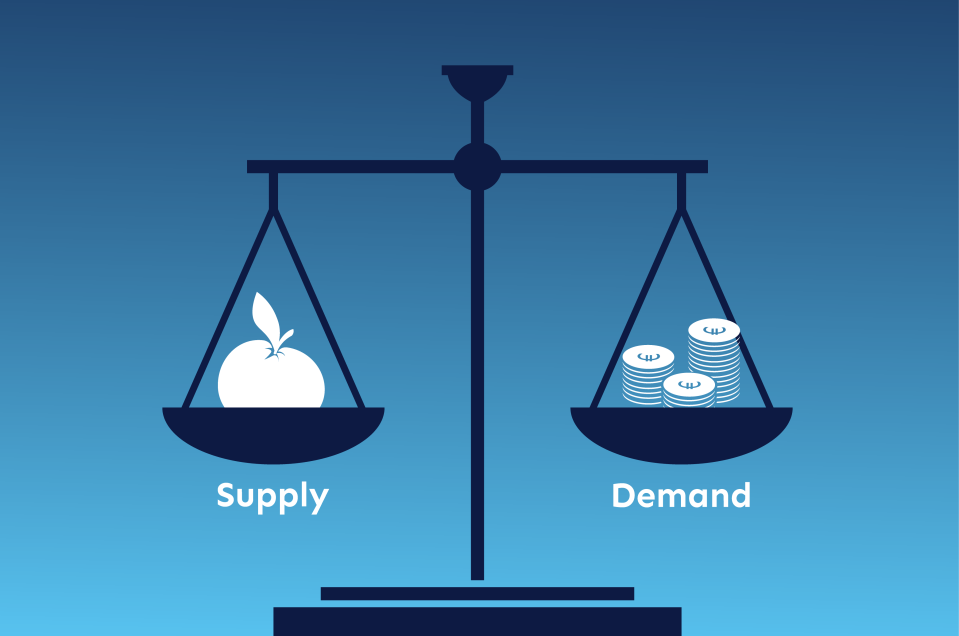Total Quality Manage...
18560 | 6 Apr 2023

In the world, both organizations and individuals face a fundamental economic problem that states that the factors of production are limited, which limits the number of products and services that can be obtained. Because the factors of production are limited, the amount of products and services available is also limited, while people's needs and wants are virtually unlimited. Today, people have to choose which needs they want to satisfy. The most important is the satisfaction of vital primary needs, followed by secondary needs.
A market is a place where suppliers and buyers meet to exchange products or services for money at a certain price. An organized exchange takes place in the market, which is one of the essential components of a market economy. We know several types of markets, namely local, regional, national, supra-regional and global markets. Within each market, there is competition, which determines the manner and efficiency of the market.
Demand represents the totality of forces acting on the market from demanders who want to obtain the desired product or service. Demand factors are needs, income, and the price of a product, service, substitute, or complementary goods. Demand factors can be subjective or objective. When we speak of subjective demand factors, we refer to the individual's desires, tastes, habits, customs, needs and expectations. Objective demand factors are determined by the buyer's money income, the price of the observed good (product or service) and the prices of other goods, and the number of consumers.
Supply is represented by all the market forces that influence the market behavior of suppliers, i.e., how much they are willing to offer at different price levels. If the market price for a product or service is low, it will be produced and offered only by those suppliers who are most efficient and manage to cover their costs even with a low price so that the volume of supply in the market is low. The supply contains all market forces on the side of the suppliers, where we observe their behavior in terms of the number of goods they are willing to offer at different price levels.
The Market Equilibrium (Figure 1) contains suppliers' and buyers' tendencies that are opposite in the market. Suppliers seek the highest price, while demanders seek the lowest price. The primary goal of suppliers is to maximize profits, while the goal of buyers is to maximize utility. The fundamental limitation of suppliers is resources, while the fundamental limitation of consumers is defined prices and available financial resources. When these opposing tendencies of suppliers and buyers are reconciled, a market equilibrium emerges and, with it, an equilibrium market price. In market equilibrium, there is neither an excess of products or services nor excess demand for said products or services.
The equilibrium price is the price at which suppliers are willing to sell as much as consumers are willing to buy, regardless of whether a price is higher or lower than the equilibrium price.
An imbalance between supply and demand causes the price to tend toward equilibrium. As various factors affect both supply and demand, the market equilibrium can be disturbed, and a new one can emerge, causing the equilibrium price to change as well. The market may have excess demand because the supply is less than the market demand. This leads to competition between demanders, which causes the price of the product or service to rise. However, excess supply can also occur when there is more supply than demand in the market. This leads to competition between suppliers as each of them wants to sell their products or services. Since the price is too high, consumers do not decide to buy. Bidders are willing to lower the price, which causes some suppliers to leave the market. The market equilibrium is constantly shifting due to ever-changing factors that affect the change in supply and demand and, consequently, the change in equilibrium price and quantity. Market fluctuations can also cause certain firms to reach the break-even point, or the point of cessation of operations, at which companies incur a loss equal to their fixed costs regardless of the selling price of the product or service. This point is referred to as the point of cessation of operations or indifference point. In the market, suppliers can also reach a break-even point where they remain in the market to maintain contact with their environment but do not make a profit but only earn enough to cover all costs incurred.

Figure 1: Market Equilibrium
Organizations (regardless of industry and whether they provide products or services) need to be aware of the importance of their customers. Customers are the backbone and the reason why businesses exist in the first place. Without customers, there is no revenue. Without sales and the resulting revenue, the company cannot survive in the marketplace in the long run. Customers are essential to any company's business because they create value on many levels.
What are your thoughts on the subject above? Feel free to post a comment or start a discussion.


Leave A Comment